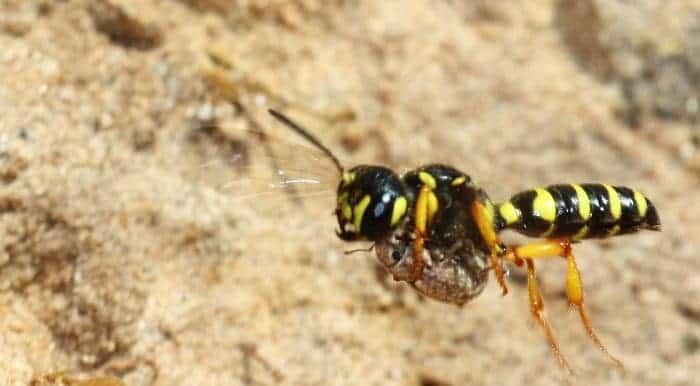To find its way home to the nest, a wasp will leave its own visual ‘breadcrumps’. The wasp will ever so often fly backwards to see its environment as if it were traveling to the nest, and use this information later to make its way safely back.
To learn this, Professor Jochen Zeil from the Australian National University’s Research School of Biology and colleagues used two high-speed cameras to record the orientation flight of the female ground-nesting wasp Cerceris australis. The cameras recorded both the 3D path the insect took, but also the direction the wasp look at the time. Using this information, the researchers were able to reconstruct what the wasp must have been seeing during this whole time. The video below illustrates this precisely. “In a way we were sitting in cockpit of this animal while it was learning how the scene looks like around the nest on departure,” Dr Zeil said.
The video shows the wasp taking regular turns backwards to reconstruct the path it needs to take on its way to the nest. The compound eyes offer low resolution, but also a panoramic vision. It took the researchers ten years to finish this process, but it was worth it.
Flying in zig-zag offered the wasp a systematic view of its surroundings, which allowed for multiple correct paths home. To assess their hypothesis, Zeil and colleagues predicting the movements of wasps returning to their nest. and found these matched their predictions. Also, when they devised virtual wasps inside a computer model, only those wasps programmed with orientation flight data could be brought home, as reported in Current Biology.
“They look back at the nest from the viewpoint of their future return,” he said. “It’s a bit like when you leave a hotel in an unfamiliar environment. To make sure you recognise it when you come back, you turn back as you are leaving it. “It’s a very smart way of obtaining all the information you need to get back.”










